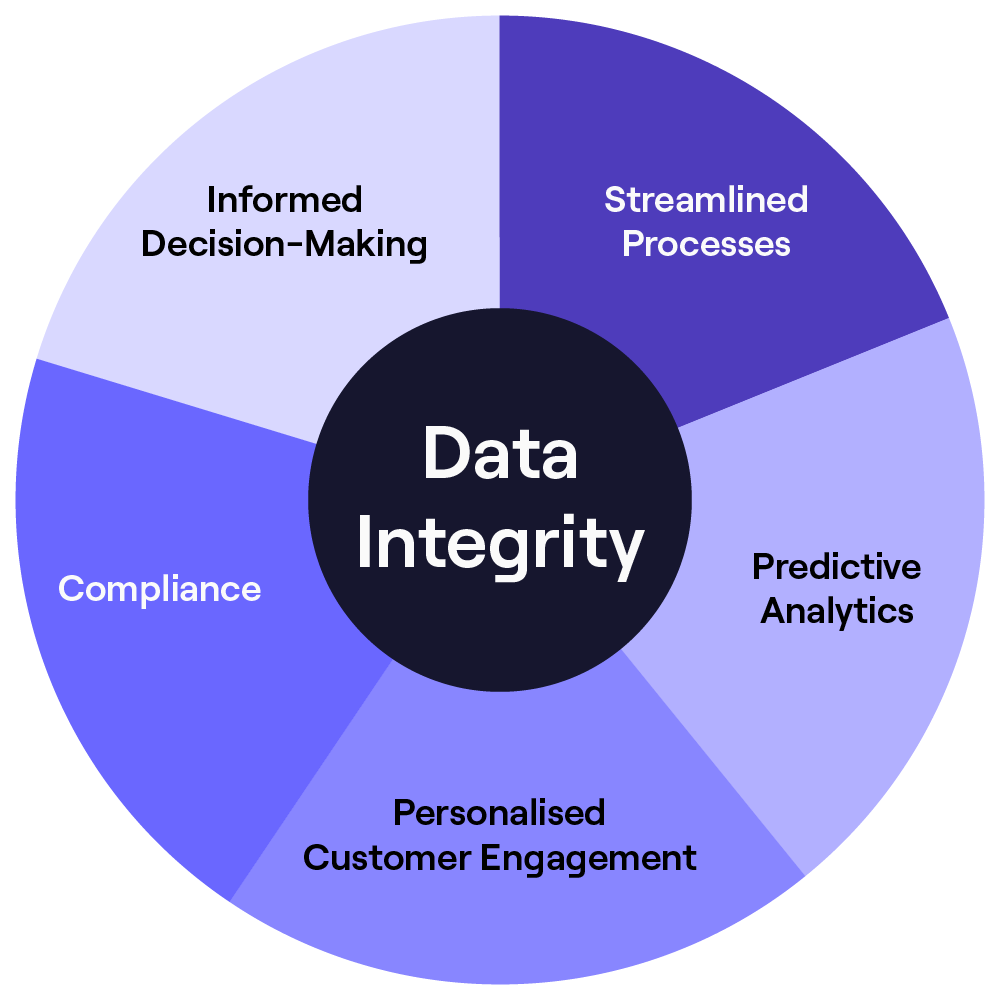Data Integrity Rituals
(2025-08-11T20:03.082Z)
Perplexity Query
(2025-08-11T20:03
.082Z)
Question:
Write a comprehensive one-page article about "Data Integrity Rituals".
Response from sonar-pro:
Data Integrity Rituals
Introduction
Data integrity rituals are the repeatable practices, checkpoints, and cultural habits organizations adopt to ensure data remains accurate, consistent, complete, and trustworthy throughout its lifecycle. They matter because modern decisions, automations, and customer experiences all rely on data that can be proven reliable, not just assumed to be so.

Main Content
At their core, data integrity rituals formalize how teams prevent, detect, and correct errors. They blend technical controls—like cryptographic verification, authentication handshakes, schema validation, and versioned lineage—with human routines such as pre-release checklists, change reviews, and incident postmortems. For example, network platforms strengthen integrity during device onboarding using authenticated key exchange and message authentication to prevent tampering or downgrade to weaker protocols; this type of “ritualized” handshake ensures configuration and session keys are trustworthy at the very start of communication.
[ggfzs2]
Practical examples span industries. In data pipelines, a ritual might require schema contracts, test datasets, and “data quality gates” before promoting a new transformation to production. In identity systems, verifiable credentials and selective disclosure let users present only necessary attributes while preserving trust; wallets assemble a “verifiable presentation” that relying parties can cryptographically validate, institutionalizing a repeatable, auditable proof flow.
[lqc8f8]
In regulated AI for mental health, teams run staged processes—risk identification, compliance assessment, and continuous performance monitoring—forming recurring checkpoints that protect data quality and patient safety across deployment cycles.
[05tchi]
The benefits are clear. Organizations gain higher confidence in analytics and AI outputs, faster audits, and reduced risk of breaches or incorrect decisions. Integrity rituals also clarify accountability across developers, operators, and business owners, establishing who verifies what and when—critical when customers and regulators demand evidence of oversight and trustworthy data handling.
[xh7odw]
Applications include secure device provisioning, financial reconciliations, privacy-preserving identity verification, clinical model monitoring, and customer data stewardship.
Yet there are challenges. Rituals can become box-checking exercises if not tied to measurable integrity outcomes (e.g., error rates, drift, lineage coverage). They may introduce overhead without automation, and they must balance data minimization with purpose limitations in identity transactions, where auxiliary data sometimes creeps in beyond what’s strictly necessary.
[lqc8f8]
Finally, organizations need algorithm agility and upgrade paths to avoid lock-in to weaker cryptography—an area where modern frameworks explicitly build in protections against downgrade and man-in-the-middle risks.
[ggfzs2]
Current State and Trends
Adoption is accelerating as sectors converge on formal frameworks that turn integrity into repeatable steps. Identity ecosystems standardize verifiable credentials and presentations, enabling wallets and verifiers to enforce minimal disclosure with cryptographic assurances embedded into everyday workflows.
[lqc8f8]
Network specifications are shipping integrity-first authentication, using mutual message authentication and ephemeral key exchange to secure configurations and session establishment by default.
[ggfzs2]
In safety-critical AI, staged governance—from risk mapping to continuous review—normalizes integrity checkpoints across the model lifecycle.
[05tchi]
Key technologies and players include verifiable credential standards bodies and implementers, network operators adopting DOCSIS 4.0–era integrity frameworks, and healthcare and enterprise AI teams maturing lifecycle governance. Recent developments emphasize downgrade protection, mutual authentication, and algorithm agility in security protocols,
[ggfzs2]
as well as selective disclosure and data minimization patterns in digital identity infrastructures.
[lqc8f8]
Ethical AI frameworks highlight operational rituals like staff training, monitoring, and iterative refinement as integral to trustworthy deployments.
[05tchi]
Future Outlook
Expect integrity rituals to become codified as machine-readable policies enforced by CI/CD for data: automated lineage checks, cryptographic attestations for datasets and models, and continuous conformance tests at each pipeline hop. Identity and networking will further converge on mutually authenticated, agile cryptography, while AI governance will embed ongoing monitoring as a default control. The result will be data products that carry verifiable proofs of quality and provenance end to end—shrinking trust gaps and accelerating compliant innovation.
[lqc8f8]
[ggfzs2]
[05tchi]
[IMAGE 3: Data Integrity Rituals future trends or technology visualization]
Conclusion
Data integrity rituals transform scattered controls into a disciplined, auditable practice that safeguards accuracy and trust across systems. As standards, protocols, and AI governance mature, these rituals will shift from best practice to baseline expectation, powering resilient digital experiences at scale.
[lqc8f8]
[ggfzs2]
[05tchi]
Footnotes
[lqc8f8] 2025, Jul 29. The impact of zero-knowledge proofs on data minimisation .... Published: 2025-07-30 | Updated: 2025-07-30
[ggfzs2] 2025, Aug 09. 10G Integrity: The DOCSIS® 4.0 Specification and Its New .... Published: 2025-07-30 | Updated: 2025-08-10
[05tchi] 2025, Aug 03. Ethical decision-making for AI in mental health. Published: 2025-07-24 | Updated: 2025-08-04
[xh7odw] 2025, Aug 02. Liability for AI Output in Customer-Facing Applications. Published: 2025-08-03